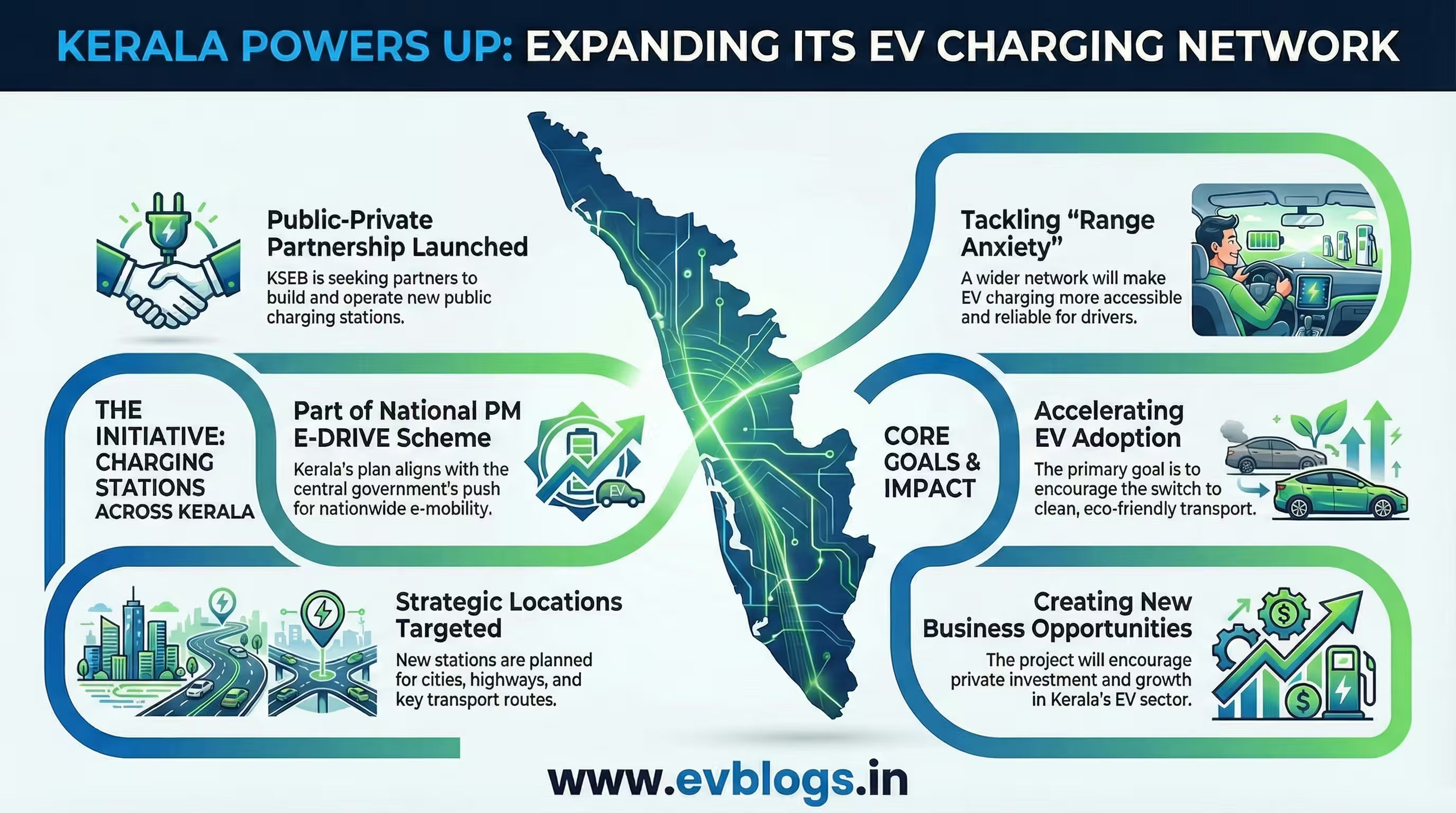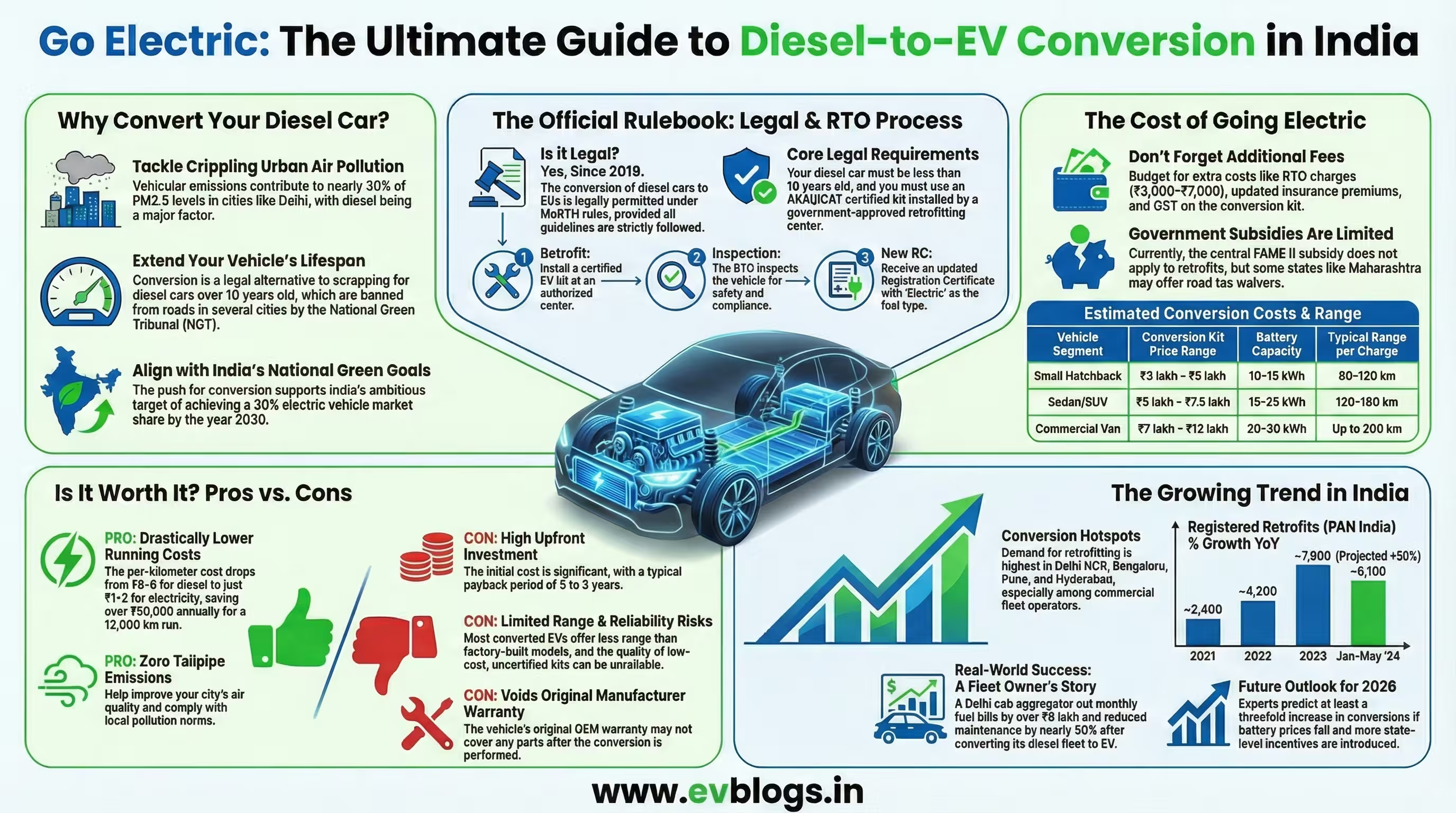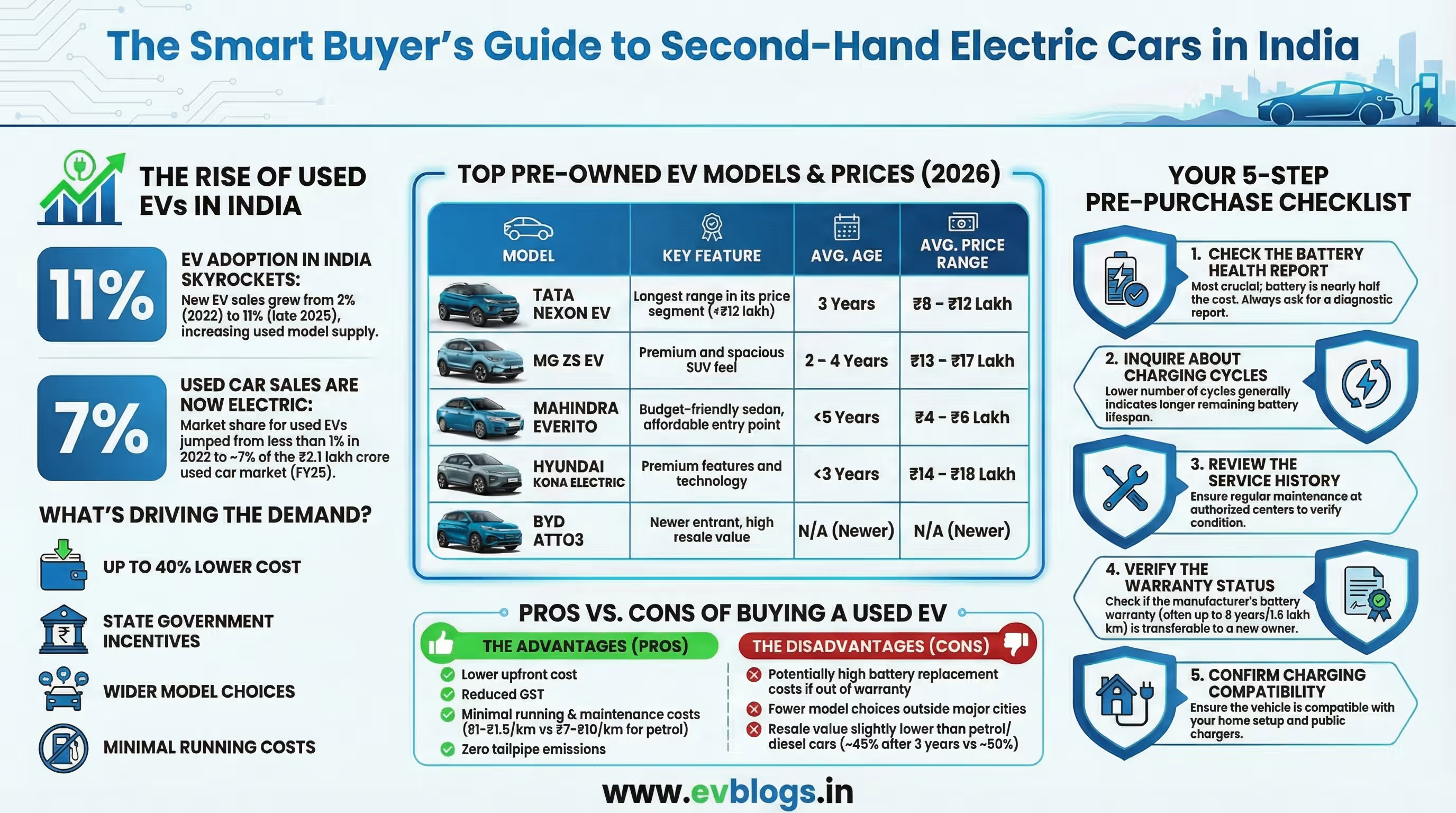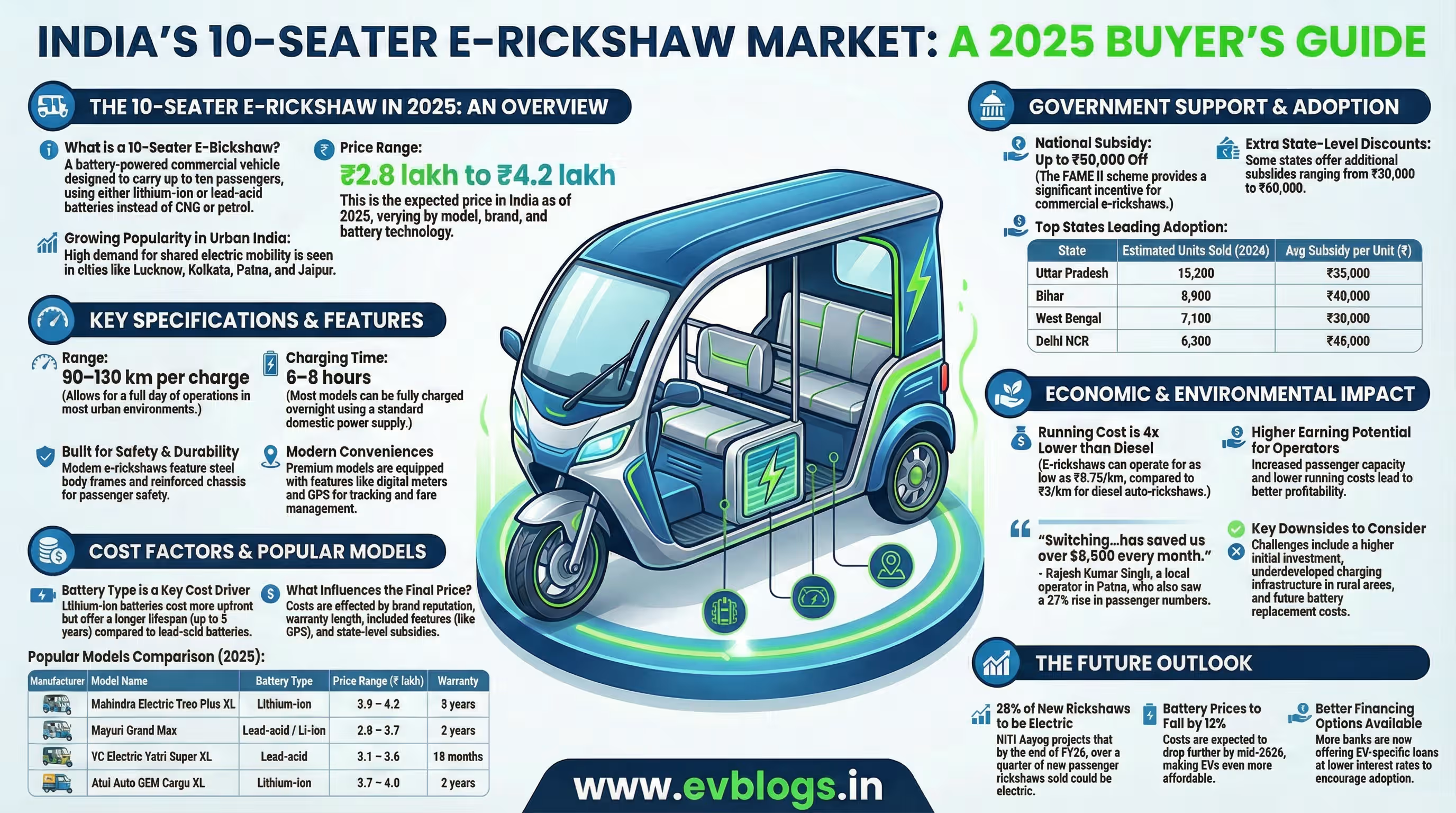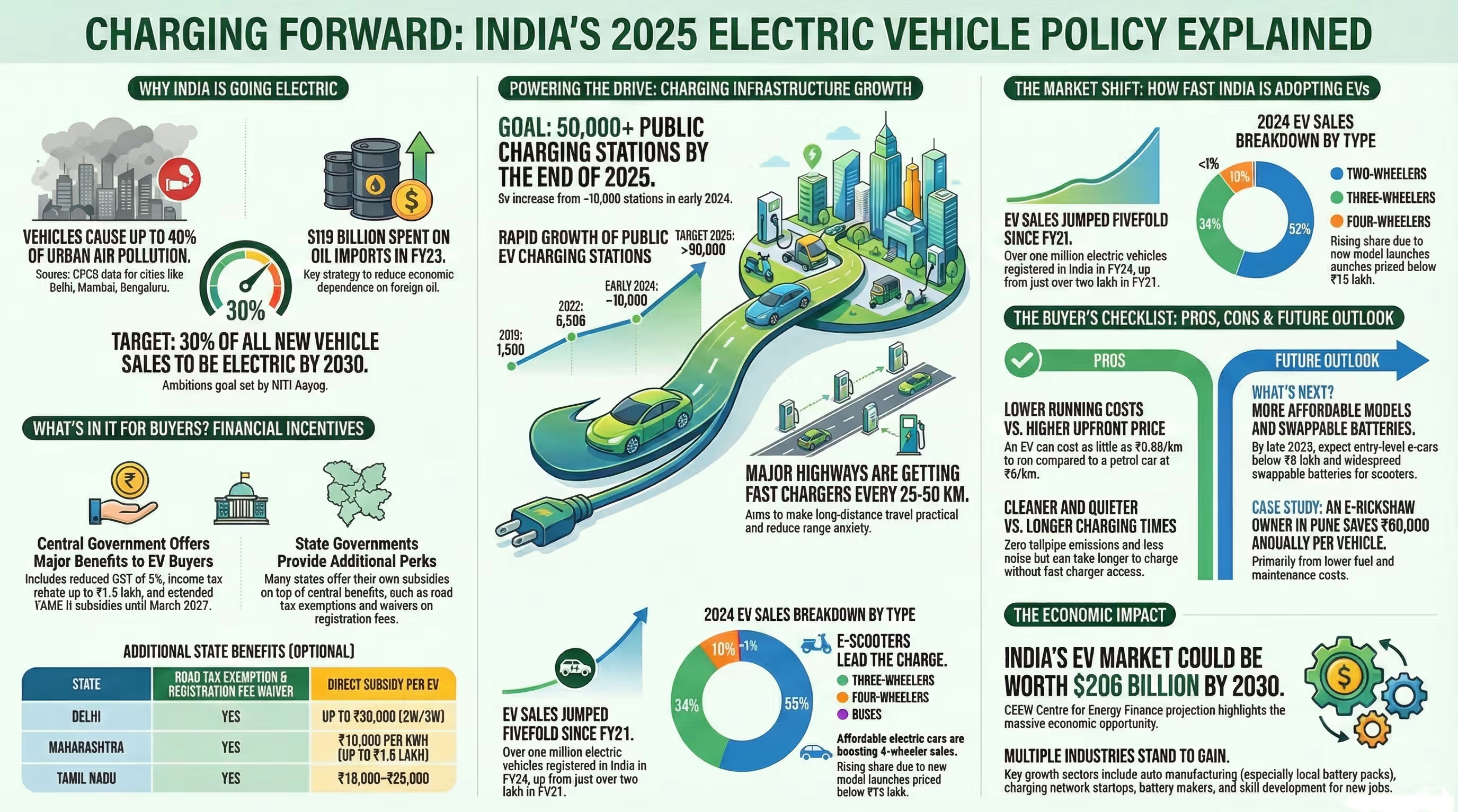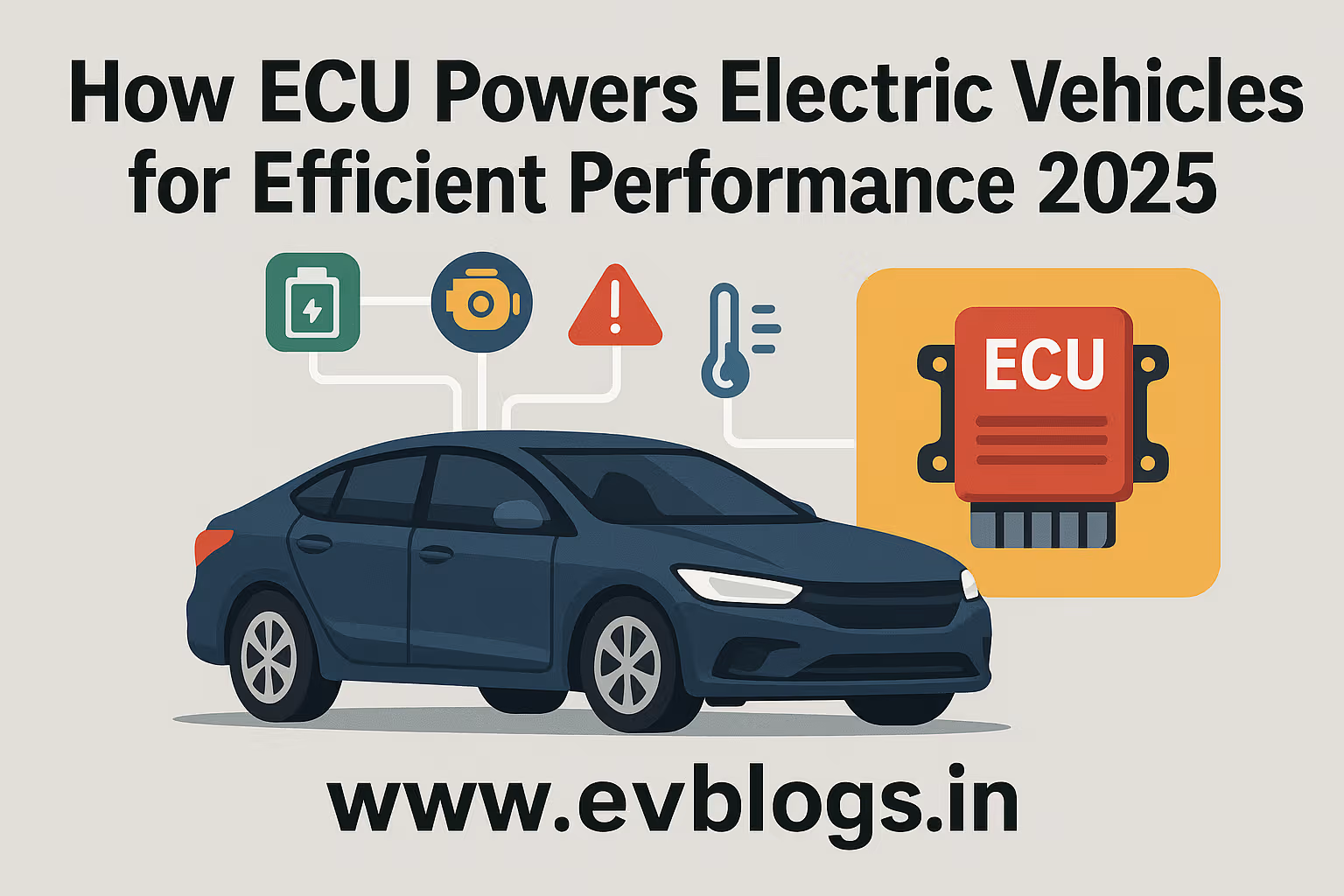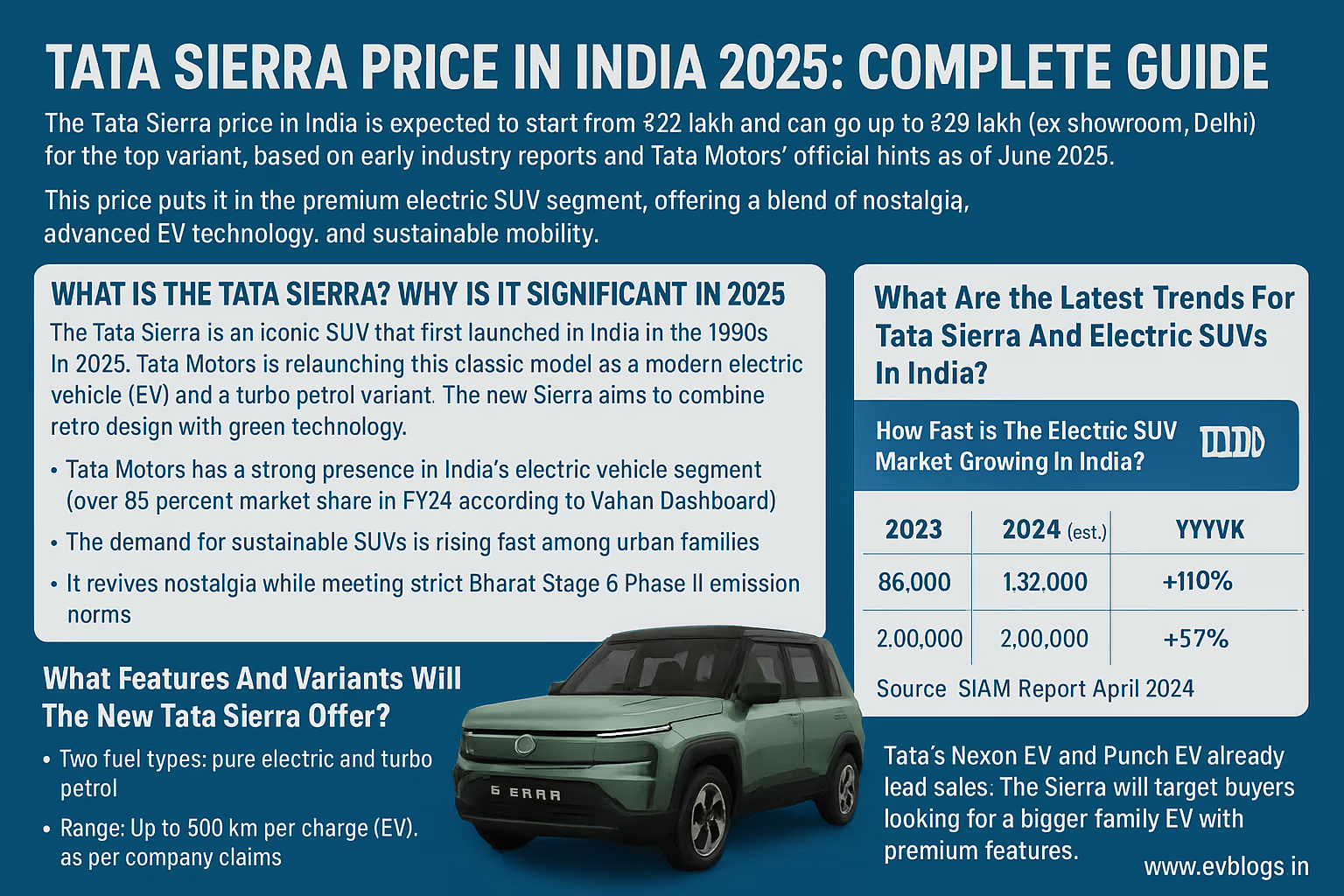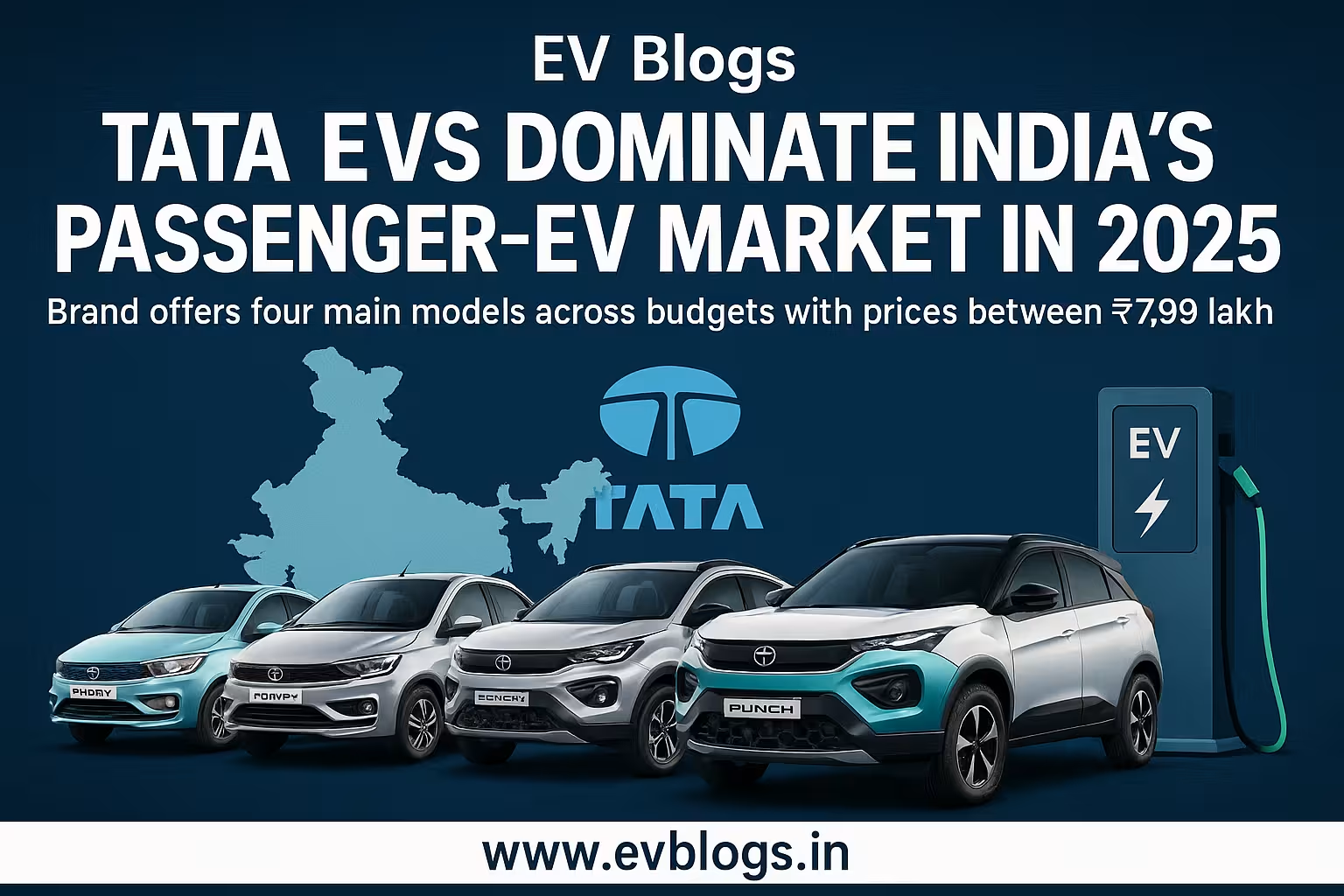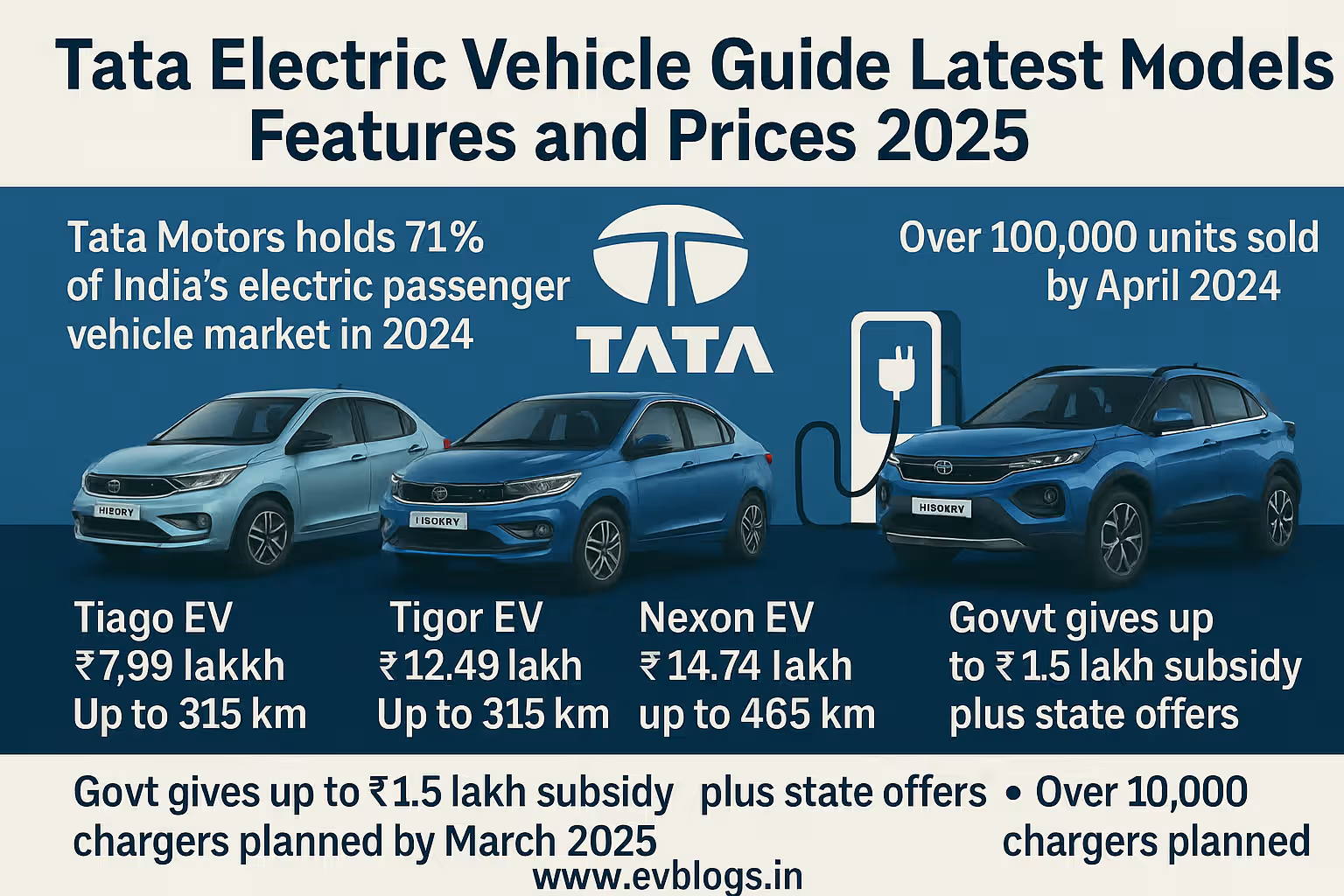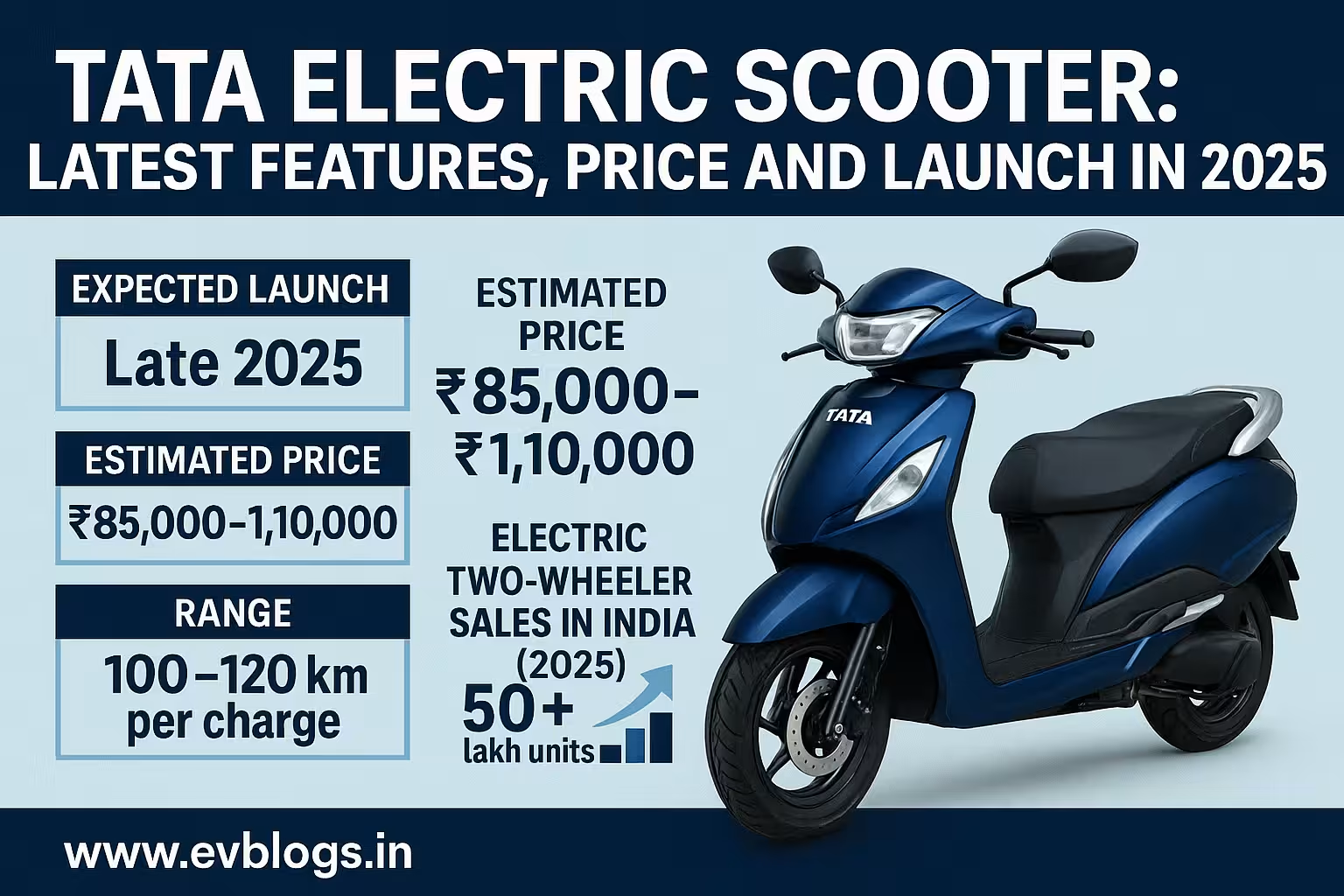Hedhvick Hirav
Hedhvick Hirav is a dedicated EV researcher and editor with over 4 years of experience in India’s growing electric vehicle ecosystem. Their contributions have been recognized in leading sustainability publications and automotive journals.
Summarize & analyze this article with
Choose an AI assistant and open this article directly:
Tip: if the AI doesn’t fetch the page automatically, paste the article URL manually.
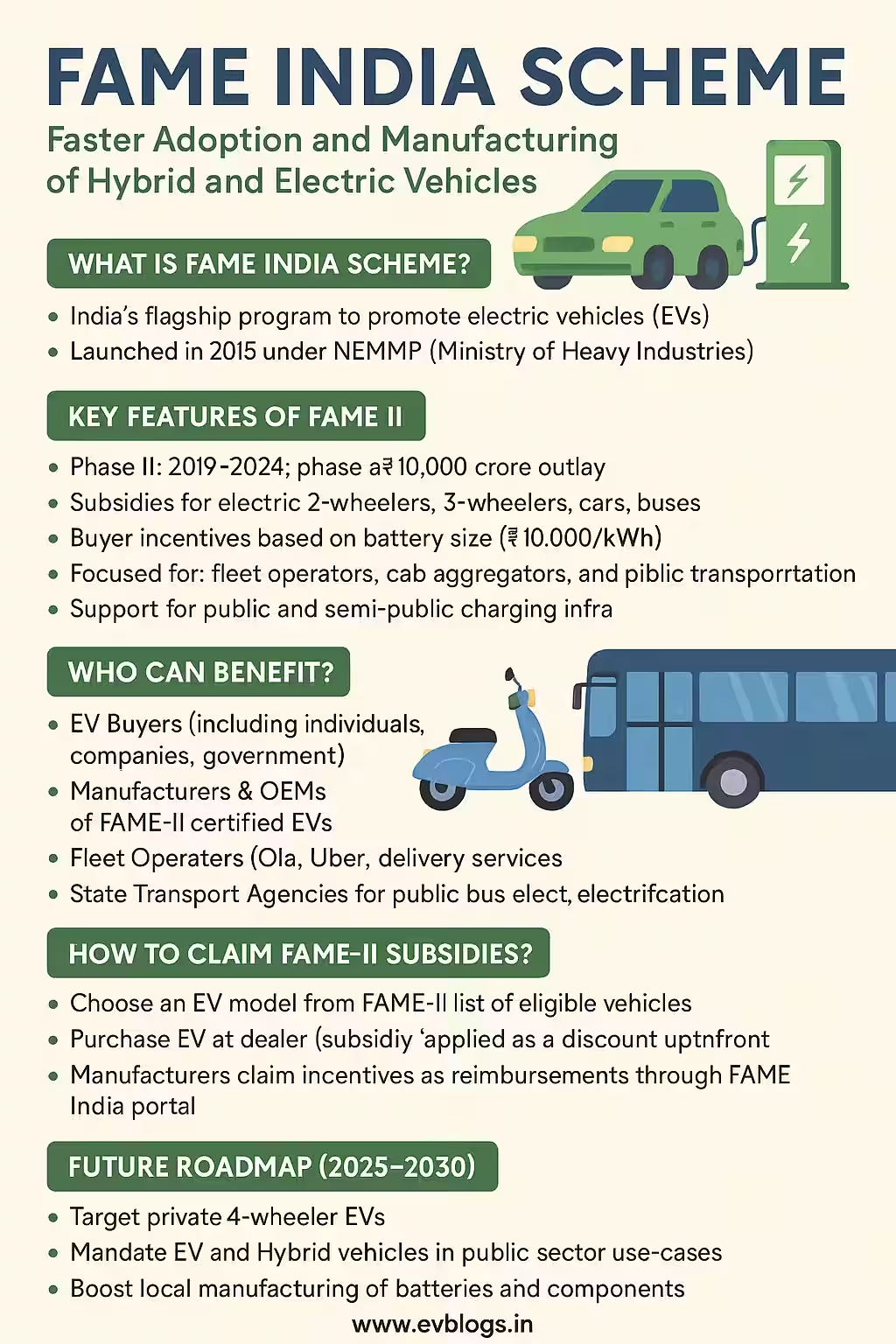
What Is the FAME India Scheme and Why Does It Matter in 2025?
The FAME (Faster Adoption and Manufacturing of Electric Vehicles) India Scheme is the cornerstone policy of the Indian government to boost electric mobility. Launched in 2015 and updated several times, as of 2025 it remains the biggest driver for affordable electric vehicles (EVs) in India, offering both subsidies and other incentives to individuals, businesses, and manufacturers.
- FAME India is now in its Phase II, running until at least March 2025.
- It supports the purchase of electric two-wheelers, three-wheelers, passenger cars, e-buses, and charging infrastructure.
- Over ₹10,000 crore has been allocated to the scheme in its current phase.
The scheme matters because it reduces the upfront cost of EVs, making clean transport accessible for more Indian citizens. With rising fuel prices and pollution concerns, the push toward EVs is only going to get stronger.
Expert Insight:
According to the Ministry of Heavy Industries, over 12.5 lakh EVs have already benefitted from FAME subsidies as of early 2025. This has helped India become the world’s third-largest EV market by volume.
How Does the FAME India Scheme Work for You as a Consumer?
If you’re planning to buy an EV in 2025, FAME Phase II offers direct subsidies to make your purchase cheaper. But how does it actually work for you?
- The subsidy is NOT given directly to you. Instead, it’s passed on as an upfront price reduction by the manufacturer or dealer when you buy a FAME-eligible EV.
- Only models listed on the official FAME portal (fame2.heavyindustries.gov.in) qualify.
- Subsidy is capped per vehicle and varies by category (two-wheeler, three-wheeler, car, etc.).
- There are also incentives for setting up charging stations and for commercial EV buyers.
Here’s what you need to do:
- Choose an EV model that is approved under FAME II.
- Buy from an authorized dealer.
- The invoice price you pay will already have the FAME subsidy deducted.
- You may have to fill a brief KYC and declaration form at the dealership.
Did You Know?
FAME II also supports electric buses and charging infrastructure projects in Indian cities, not just private vehicles.
Who Is Eligible for FAME India Subsidies in 2025?
Not every EV or buyer qualifies for the subsidy. Here’s a clear breakdown:
- You must buy a new electric vehicle in India in 2025.
- The vehicle must be on the FAME II approved list.
- Only vehicles with advanced batteries (mostly lithium-ion) are eligible. Lead-acid battery EVs are excluded.
- For two-wheelers: The vehicle must deliver at least 55 km per charge and a minimum top speed of 40 kmph.
- The subsidy is available for both individual and fleet/commercial buyers.
- The benefit is only for first-time registration of new EVs.
Exclusions:
- Second-hand EVs or conversions are not eligible.
- Some imported EVs may not qualify if not listed under FAME II.
Documentation Needed
- Aadhar Card or other valid ID
- Proof of residence
- PAN card (for higher value vehicles or commercial registration)
- Dealer-provided forms (KYC, declaration)
Did You Know?
FAME II subsidies have special provisions for students, women, and rural entrepreneurs under certain state-level schemes in 2025.
Which Vehicles Qualify for FAME II Subsidies in 2025?
Not all EVs on the market are eligible for subsidies. The list below focuses on the top-selling eligible models as of 2025, across different segments.
| Segment | Model Name | Ex-Showroom Price (₹) | FAME Subsidy (₹) | Net Price After Subsidy (₹) | Battery Capacity (kWh) | Claimed Range (km) |
|---|---|---|---|---|---|---|
| Two-Wheeler | Ola S1 Pro 2nd Gen | 1,45,000 | 22,500 | 1,22,500 | 4.0 | 195 |
| Two-Wheeler | Ather 450X Gen 4 | 1,60,000 | 22,500 | 1,37,500 | 3.7 | 150 |
| Two-Wheeler | TVS iQube ST | 1,56,000 | 22,500 | 1,33,500 | 4.56 | 165 |
| Two-Wheeler | Bajaj Chetak Urbane | 1,45,000 | 22,500 | 1,22,500 | 3.2 | 113 |
| Three-Wheeler | Mahindra Treo Zor | 3,80,000 | 52,000 | 3,28,000 | 7.37 | 110 |
| Three-Wheeler | Piaggio Ape E-City | 3,25,000 | 51,000 | 2,74,000 | 7.0 | 90 |
| Car | Tata Tiago EV | 8,69,000 | 1,50,000 | 7,19,000 | 24 | 315 |
| Car | Tata Nexon EV MR | 15,49,000 | 1,50,000 | 13,99,000 | 30 | 325 |
| Electric Bus | Olectra K9 | 2,10,00,000 | 30,00,000 | 1,80,00,000 | 370 | 250 |
| Electric Bus | Ashok Leyland Circuit | 2,00,00,000 | 30,00,000 | 1,70,00,000 | 150 | 120 |
Details of Top FAME-eligible EVs in 2025
- Ola S1 Pro 2nd Gen: Most popular urban scooter, excellent range and digital features.
- Ather 450X Gen 4: Known for performance and smart connectivity.
- TVS iQube ST: Wide dealer network, good reliability.
- Bajaj Chetak Urbane: Classic brand, premium metal build.
- Mahindra Treo Zor: Leading EV cargo three-wheeler for last-mile delivery.
- Piaggio Ape E-City: Trusted by urban e-rickshaw operators.
- Tata Tiago EV: Most affordable electric hatchback in India.
- Tata Nexon EV MR: Best-selling electric SUV, high safety ratings.
- Olectra K9 Bus: Preferred for public transit in top Indian cities.
- Ashok Leyland Circuit Bus: Indian-made, used in state-run bus fleets.
Did You Know?
The best-selling electric car in India as of 2025 is the Tata Tiago EV, not just because of its price but also due to the FAME subsidy and low running costs.
What Are the Steps to Claim Your FAME Subsidy in 2025?
You don’t need to fill any complex government forms or visit multiple offices. The process is now almost fully automated and handled by your EV dealer. Here’s how you can claim the FAME subsidy:
- Visit the official FAME II website or check the list of eligible models at your dealership.
- Choose and test-drive your preferred FAME-eligible EV.
- Provide your KYC documents (Aadhar, PAN, proof of address).
- The dealer uploads your documents and vehicle details to the FAME portal.
- The subsidy amount is applied directly as a discount to your purchase price.
- You pay the net amount (after subsidy) for the EV.
- Your vehicle is registered, and you receive all relevant documents and warranty.
Tips for Smooth Subsidy Claim:
- Always cross-check if your chosen model is on the FAME-approved list for 2025.
- If you are a fleet/commercial buyer, some extra documentation (GST, company PAN, etc.) may be needed.
- For EVs above ₹15 lakhs (like premium cars), check for any price caps on subsidy eligibility.
Expert Insight:
In 2025, subsidy claims are processed within 7-10 days of purchase, making the benefit almost instant for buyers.
When Should You Apply for a FAME EV Subsidy?
Timing is crucial. The FAME II subsidies are available on a first-come, first-served basis until the scheme’s fund allocation is exhausted or until March 2025—whichever is earlier.
- Buy early in the financial year to ensure funds are still available.
- Keep an eye on updates from the Ministry of Heavy Industries regarding subsidy pool status.
- If you plan to buy an EV towards the end of the scheme (Feb-March 2025), confirm availability with your dealer.
Other Timing Considerations
- Many state governments offer additional EV incentives. These may have separate deadlines or limited quotas.
- New vehicle launches are often timed for maximum subsidy benefit—so watch the news for upcoming models.
Did You Know?
In some states, the local EV subsidy is only processed after the Central FAME II subsidy, so early purchase helps maximize your total savings.
Why Should You Claim the FAME EV Subsidy in 2025?
The benefits of claiming the FAME subsidy go beyond just saving money. Here’s why it makes sense:
- Reduced Purchase Price: Subsidies can cut ₹10,000-1.5 lakh (or more) from your EV’s cost.
- Low Running Costs: EVs are 60-70% cheaper to run per km compared to petrol/diesel.
- Zero Emissions: You contribute directly to cleaner cities and less air pollution.
- Future-Readiness: With the government’s push, EV charging and resale value are only improving.
- Extra State Benefits: Many states give additional waivers on road tax and registration fees for FAME-eligible EVs.
Benefits for Different User Types
- Students & Young Professionals: Affordable commuting, lower maintenance.
- Families: Safe, silent, and cheap-to-run cars for city use.
- Commercial/Fleet Owners: Major savings on TCO (total cost of ownership), plus image boost for going green.
Expert Insight:
Studies show that an average Indian EV owner saves ₹30,000-50,000 per year in fuel and maintenance compared to a petrol car, thanks to FAME and state incentives.
How Much Is the FAME Subsidy for Different EV Types in 2025?
Subsidy amounts are based on vehicle type, battery size, and performance. Here’s a quick reference for 2025:
| Vehicle Type | Subsidy Amount (₹/kWh) | Max Subsidy Cap (₹) | Example Battery Size (kWh) | Typical Net Subsidy (₹) |
|---|---|---|---|---|
| Two-Wheeler | 10,000 | 22,500 | 2.5 - 4.0 | 15,000 – 22,500 |
| Three-Wheeler | 10,000 | 51,000 – 52,000 | 7.0 – 8.0 | 40,000 – 52,000 |
| Four-Wheeler (Car) | 10,000 | 1,50,000 | 24 – 30 | 1,20,000 – 1,50,000 |
| Bus | 20,000 | 30,00,000 | 150 – 370 | 20,00,000 – 30,00,000 |
Key Points
- Subsidies are capped per vehicle.
- Only vehicles meeting certain speed, range, and Indian content requirements qualify.
- Some premium EVs are outside the price cap and do not get the FAME benefit.
State-level Add-ons
Some states (like Delhi, Maharashtra, Tamil Nadu) offer extra subsidies on top of FAME. Check local policies for 2025 as these can add up to ₹50,000 or more.
Did You Know?
Delhi’s EV policy offers up to ₹1.5 lakh extra subsidy for four-wheelers and waiver of registration fees—over and above FAME II.
What Documents Do You Need to Claim the FAME EV Benefits?
You don’t need a mountain of paperwork for FAME II. Here’s what is generally required at the dealer:
- Photo ID proof (Aadhaar card preferred)
- Address proof (Voter ID, passport, utility bill)
- PAN card (especially for four-wheelers)
- Recent passport-size photographs
- Dealer’s KYC & FAME claim forms (filled at time of purchase)
- For commercial buyers: GST registration, company PAN, and proof of business
Tips for Hassle-Free Process
- Keep your Aadhaar and PAN linked for smooth verification.
- If buying on a loan, coordinate with your bank for required documents.
- Always ask the dealer for an acknowledgement of your FAME subsidy claim.
Expert Insight:
Most EV dealers in metro cities now have dedicated FAME desks to handle all paperwork and queries in-house.
How Do FAME Subsidies Compare with Other EV Incentives in India?
There are multiple EV benefit schemes running in parallel with FAME II in 2025. Here’s a comparison to help you understand where you can maximize your savings.
| Scheme/Benefit | Applicability | Subsidy/Discount (₹) | Process | Stackable with FAME? |
|---|---|---|---|---|
| FAME II | Nationwide | Up to 1.5 lakh (car), 22,500 (2W) | Dealer claim at purchase | Base scheme |
| Delhi EV Policy | Delhi NCR | Up to 1.5 lakh (car), 30,000 (2W) | Online claim post-purchase | Yes |
| Maharashtra EV Policy | Maharashtra | Up to 1.0 lakh (car), 25,000 (2W) | Dealer deduction at purchase | Yes |
| Tamil Nadu EV Policy | Tamil Nadu | Road tax waiver, 20,000 (2W) | Dealer/online | Yes |
| GST Reduction | Nationwide | 5% on EVs (vs 28% on ICE vehicles) | Built into invoice | Yes |
| Income Tax 80EEB | Nationwide | Up to ₹1.5 lakh on interest paid | IT return claim | Yes |
| Registration Fee Waiver | Many states | ₹10,000–50,000 (approx) | RTO at registration | Yes |
| Scrappage Incentive | Some states | ₹5,000–10,000 (2W) | At time of scrapping old vehicle | Yes |
| Corporate/Fleet Grants | Select cities | Varies | Company claim | Yes |
| Charging Infra Grants | PAN-India | 25% of infra cost | By charging operator | No (infra only) |
Detailed List of Other Incentives
- Delhi EV Policy: Highest combined subsidy for cars and two-wheelers, priority for public charging.
- Maharashtra EV Policy: Early bird incentive, scrappage bonus, and road tax exemptions.
- Tamil Nadu EV Policy: Focuses on road tax waivers, incentives for charging stations.
- GST Reduction: All EVs pay only 5% GST, compared to 28%+ for petrol/diesel cars.
- Income Tax Section 80EEB: Deduction of up to ₹1.5 lakh on interest paid for EV loans.
- Registration Fee Waiver: Available in most progressive states.
- Scrappage and Exchange Bonus: Encourages phasing out old vehicles.
- Corporate & Fleet Grants: For bulk purchasers and app-based fleets.
- Charging Infrastructure Grants: For companies setting up public EV chargers.
Did You Know?
You can combine most central and state EV incentives, but not all can be claimed at the same time. Always check with your dealer or state EV cell for the latest stackable benefits.
Which Are the Top 10 FAME-Eligible EV Models in 2025?
There are now dozens of FAME-eligible EVs in India, but these 10 models are most popular in 2025 by sales, features, and value for money.
| Rank | Model Name | Segment | Price After Subsidy (₹) | Claimed Range (km) | Unique Feature |
|---|---|---|---|---|---|
| 1 | Tata Tiago EV | Car | 7,19,000 | 315 | Most affordable electric car |
| 2 | Tata Nexon EV MR | SUV | 13,99,000 | 325 | Top-selling electric SUV |
| 3 | Ola S1 Pro 2nd Gen | Scooter (2W) | 1,22,500 | 195 | High-tech urban scooter |
| 4 | Ather 450X Gen 4 | Scooter (2W) | 1,37,500 | 150 | Fast charging, smart features |
| 5 | TVS iQube ST | Scooter (2W) | 1,33,500 | 165 | Balanced value |
| 6 | Mahindra Treo Zor | Cargo 3W | 3,28,000 | 110 | Leading e-cargo |
| 7 | Piaggio Ape E-City | Passenger 3W | 2,74,000 | 90 | Trusted auto-rickshaw |
| 8 | MG Comet EV | Compact Car | 6,98,000 | 230 | City-friendly size |
| 9 | Simple One | Scooter (2W) | 1,24,000 | 212 | Class-leading range |
| 10 | Citroen eC3 | Hatchback | 11,30,000 | 320 | Euro design meets Indian need |
Why These Models Stand Out
- Tata Tiago EV: Highest VFM (value for money), robust service.
- Tata Nexon EV MR: Ideal for families, highway range.
- Ola S1 Pro 2nd Gen: Massive urban presence, app-based features.
- Ather 450X Gen 4: Leader in performance for city commuters.
- TVS iQube ST: Best for those looking for reliability, after-sales.
- Mahindra Treo Zor: E-commerce and SME favourite for delivery.
- Piaggio Ape E-City: Most popular passenger e-auto.
- MG Comet EV: Compact, easy to park, tech-packed.
- Simple One: New entrant with highest range among scooters.
- Citroen eC3: Upmarket, European styling with Indian fit.
Expert Insight:
Ola S1 Pro and Tata Tiago EV together accounted for over 40% of all FAME-subsidized personal EV sales in 2025.
What Are the Key Mistakes to Avoid When Claiming FAME II Subsidies?
Even though the process is simple, some buyers miss out on the full benefit. Here’s what you should not do:
- Buying Unlisted Models: Only buy FAME-approved models; otherwise, you won’t get the subsidy.
- Not Checking Subsidy Caps: Don’t assume all variants are eligible; check the variant and price cap.
- Missing Documentation: Incomplete KYC or incorrect address can delay subsidy processing.
- Delaying the Purchase: Waiting until March 2025 can risk missing out if the funds run out.
- Ignoring State Policies: Failing to claim state-level benefits in addition to FAME.
- Using Middlemen: No agent or broker is needed; always go through authorized dealers.
Pro Tips
- Ask for a breakup of subsidy in your invoice.
- Keep all receipts and documents for future reference or resale.
- If facing delays, contact the FAME grievance cell via the official portal.
Did You Know?
More than 15% of FAME II subsidy claims in 2024-25 were delayed due to incomplete paperwork or purchase of non-eligible vehicles. Double-check before you buy!
How Have Real Indian Users Benefited from FAME Subsidies? (User Experiences & Case Studies)
Nothing is more convincing than hearing from real Indian EV owners who have used FAME II subsidies to make their switch.
User Story 1: Komal, New Delhi – Tata Tiago EV
- Purchased in January 2025 for her daily commute.
- FAME II subsidy reduced her upfront payment by ₹1.5 lakh.
- Also received an extra ₹1 lakh from Delhi’s policy.
- She now spends just ₹600/month on charging vs ₹4,000/month for petrol earlier.
User Story 2: Rajesh, Pune – Ola S1 Pro
- Booked in April 2025.
- Net price dropped from ₹1,45,000 to ₹1,22,500 after FAME II.
- Maharashtra EV policy gave an extra ₹10,000.
- Rajesh uses the scooter for delivery work and estimates saving ₹25,000/year in fuel costs.
User Story 3: Priya, Chennai – Piaggio Ape E-City
- Runs an e-auto for daily city rides.
- Got ₹51,000 off the price due to FAME II.
- Tamil Nadu state policy also waived road tax.
- Lower running costs let her save more and expand her business.
User Story 4: Future Fleet Pvt. Ltd., Bengaluru
- Bought 10 Tata Nexon EVs for staff transport.
- Received a total FAME II benefit of ₹15 lakh (₹1.5 lakh per vehicle).
- Also got corporate fleet incentives from the Karnataka government.
Expert Insight:
Most Indian EV buyers in 2025 found the process “hassle-free” with proper documentation and dealer support.
Final Verdict: Should You Claim FAME EV Subsidies in 2025?
If you’re on the fence about buying an electric vehicle in India in 2025, claiming the FAME subsidy is a smart decision. The scheme is transparent, the benefits are substantial (saving anywhere from ₹10,000 to ₹1.5 lakh or more), and the process is much easier than most other government schemes.
- Check your chosen EV’s FAME eligibility before you book.
- Complete all documentation at the dealership for a smooth claim.
- Remember, the scheme is first-come, first-served until March 2025 or until funds last.
- Look for extra benefits from your state government to maximize savings.
Bottom line:
With the FAME II scheme, you don’t just save money—you also invest in a greener, future-ready India. Given rising fuel costs and environmental concerns, this year is possibly the best time to go electric.
Additional FAQs
Q1: Can I claim the FAME subsidy if I buy an EV online?
Yes, if the dealer is authorized and the purchase process includes all KYC and paperwork as per FAME norms. Ensure you get a proper invoice showing the subsidy deduction.
Q2: Is the FAME subsidy available for old or second-hand EVs?
No, only first-time registered, new EVs are eligible for the subsidy.
Q3: How long does it take to get the FAME subsidy?
With current systems, the subsidy is passed on instantly at purchase. The dealer gets reimbursed by the government within 7-10 days.
Q4: Can I claim both Central (FAME II) and State subsidies?
Yes, most state subsidies are in addition to FAME II, but check local rules and caps.
Q5: What if the FAME scheme ends in March 2025? Will there be a new one?
As of now, FAME II is active until March 2025. The government may introduce a new phase or revised scheme—watch for official updates.
This article is fact-checked and updated for 2025. Always consult your local dealer and the official FAME II portal before making a purchase decision. All prices and benefits are indicative and may change based on government notifications.


